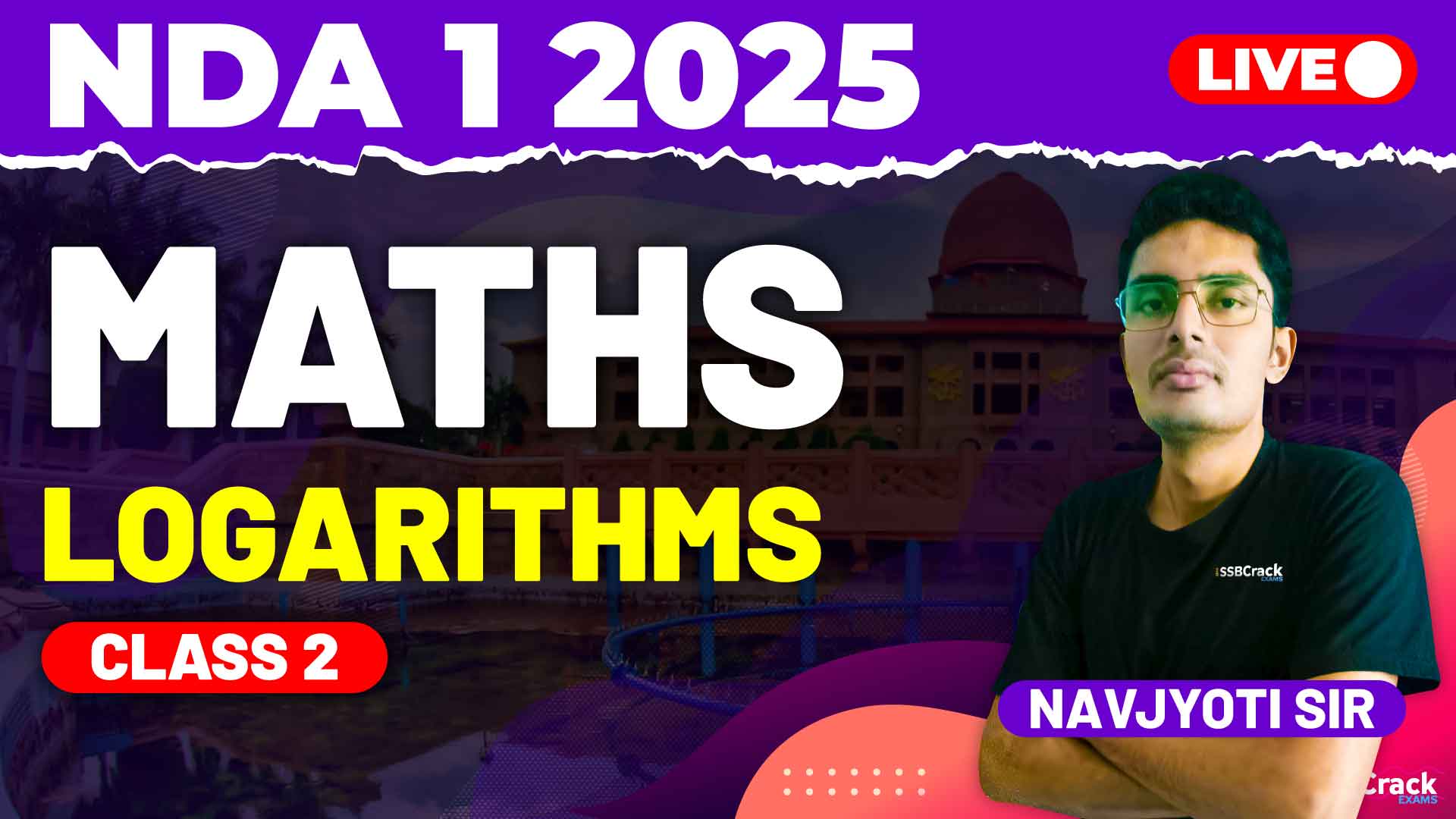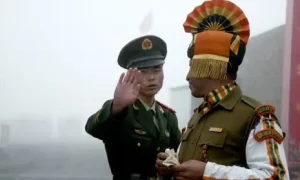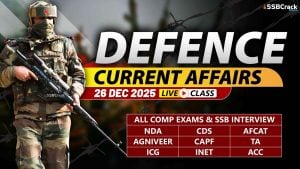Logarithms are an integral part of the syllabus for the National Defence Academy and Naval Academy (NDA-NA) Exam – Paper I (Maths). This topic frequently appears in various forms in the exam, often through multiple-choice questions (MCQs) that test the understanding of basic logarithmic principles and their properties. A recent class, which focused on logarithms, mainly revolved around solving MCQs from previous years and discussing expected questions for the upcoming NDA-NA exam. This session gave students valuable insight into how to approach logarithmic problems efficiently and accurately.
In this blog, I will break down the key takeaways from the class, provide strategies essential for mastering logarithms, and offer tips for success in the NDA-NA exam.
Overview of the Class: Logarithmic MCQs
The class began with a review of logarithmic concepts, followed by solving MCQs from previous NDA-NA exams. The focus was on both the conceptual understanding of logarithms and the application of that knowledge to solve exam-level questions. Here are the primary areas that were covered:
1. Importance of Logarithmic Properties in MCQs
Logarithmic properties form the foundation of solving most problems in this topic. During the class, special emphasis was placed on recognizing when and how to apply these properties. Whether it’s breaking down complex expressions or simplifying logarithmic equations, these properties help reduce the complexity of problems, making them easier to tackle within the time constraints of an exam.
In particular, students were encouraged to focus on:
- The product and quotient rules, which help simplify logarithms of multiplied or divided terms.
- The power rule, which allows for quick simplifications of logarithms involving exponents.
2. Commonly Asked Logarithmic Questions
The instructor discussed how certain types of logarithmic questions frequently appear in the NDA-NA exam. These include:
- Solving logarithmic equations, which typically involve applying the properties of logarithms and recognizing patterns to simplify the problem.
- Questions that require evaluating the logarithm of a number using base 10 or base “e” (natural logarithms).
- Logarithmic comparisons, which test the understanding of the relationship between different logarithmic values.
By practicing these types of problems, students were able to sharpen their skills and familiarize themselves with the pattern of questions expected in the exam.
3. Focus on Speed and Accuracy
One of the key themes of the class was the importance of balancing speed and accuracy. In the NDA-NA exam, time management is crucial. Therefore, students were taught quick and efficient methods for solving MCQs. This included using shortcuts for logarithmic simplifications, recognizing patterns in questions, and applying properties correctly without over-complicating the steps.
The class involved timed exercises, where students practiced solving questions within a limited time frame. This allowed them to simulate real exam conditions and improve their ability to work under pressure.
Strategies for Preparing Logarithms for NDA-NA Exam
Logarithms, while sometimes tricky, can be mastered with the right approach and consistent practice. Below are the strategies recommended during the class to help students prepare for this topic in the NDA-NA exam:
1. Understand the Core Concepts
The foundation of any topic lies in understanding its basic concepts. For logarithms, this means grasping what logarithms represent, how they are related to exponents, and the fundamental properties that govern them. Before jumping into problem-solving, make sure you have a clear understanding of these basics.
2. Master Logarithmic Properties
As discussed in the class, logarithmic properties are essential for solving problems efficiently. Practice applying these properties in various contexts:
- Simplify expressions by breaking them down using the product, quotient, and power properties.
- Convert complex logarithmic expressions into simpler forms using the change of base property.
- Ensure you can work with both common logarithms (base 10) and natural logarithms (base “e”).
Familiarity with these properties will help you approach MCQs with confidence, as many questions in the NDA-NA exam involve using these tools to find the solution.
3. Practice with Previous Year’s Papers
During the class, several MCQs from previous NDA-NA papers were discussed. One of the best ways to prepare for logarithms is by solving these past questions. This not only gives you a sense of the difficulty level but also helps you recognize common question patterns. Regular practice with past papers allows you to gauge your preparation and identify areas where you might need additional focus.
4. Tackle Logarithmic Equations with Confidence
Many logarithmic MCQs involve solving equations, either by isolating the logarithmic term or converting the equation into a more manageable form. It’s important to practice different types of logarithmic equations, including those that require:
- Simplifying multiple logarithmic terms.
- Recognizing patterns in logarithmic expressions.
- Solving real-world problems that use logarithms, such as growth or decay problems.
Focus on accuracy here, as logarithmic equations can sometimes lead to tricky solutions if not handled carefully.
5. Use Timed Practice Sessions
Logarithmic questions, while usually straightforward, can become time-consuming if not approached methodically. During the class, timed practice sessions were held to help students work efficiently. You can incorporate this into your preparation by setting a timer while solving MCQs. This will improve your speed, which is crucial for the NDA-NA exam, where time management plays a big role in overall performance.
6. Avoid Common Pitfalls
Some common mistakes to avoid include:
- Confusing the properties: Ensure you are clear on when to apply the product, quotient, and power rules.
- Overcomplicating equations: Many logarithmic questions can be simplified with the correct application of properties, so avoid taking unnecessary steps.
- Forgetting base restrictions: Remember that logarithmic functions are only defined for positive numbers, so watch out for domain errors while solving equations.
7. Review Expected Questions
In addition to previous year’s papers, it’s important to be aware of the types of questions expected in the upcoming NDA-NA exam. The class also focused on predicted MCQs, allowing students to practice problems that are likely to appear. These types of questions typically follow familiar patterns, so keep an eye out for any recurring themes in your practice.
Conclusion
The recent class on logarithms provided valuable insights into how to effectively tackle this topic for the NDA-NA exam. With a focus on MCQs from previous years and expected questions, students were able to strengthen their understanding and sharpen their problem-solving skills.
To prepare thoroughly for the logarithms section, it’s important to:
- Master the basic concepts and properties.
- Practice solving logarithmic equations and expressions from past papers.
- Engage in timed practice to improve both speed and accuracy.
- Stay aware of common pitfalls and avoidable errors.
By following these strategies and practicing consistently, you can build your confidence and ensure that logarithmic questions become a scoring opportunity in the NDA-NA exam. Remember, the key to success lies in a clear understanding of the topic, regular practice, and efficient problem-solving techniques. With the right approach, you’ll be well-prepared to tackle any logarithmic questions that come your way.



















